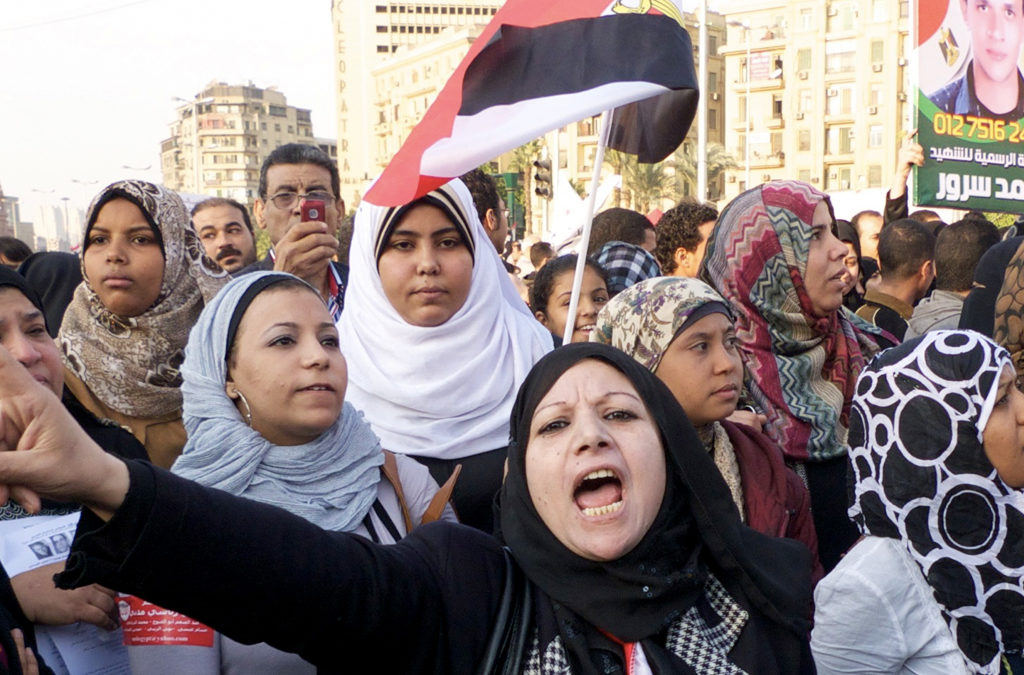David Cortright
The enormity of what the Egyptian people have accomplished is breathtaking. The Mubarak dictatorship was brought down in just 18 days through unarmed mass revolution. Estimates of the number of people actively involved range from a low of 7 million to as high as 15 million. Exact figures may never be known, but this much is clear: It was one of the largest outpourings of mass civil resistance in human history.
The protests that began on January 25 were initiated by a few hundred daring young people, mostly well-educated middle class students. During a research trip to Cairo in June to capture the details of the uprising while it is fresh in the minds of participants, we asked a dozen university students how they prepared for a revolution.
They described how they gathered tens of thousands of friends on Facebook, assembled in poor neighborhoods and called for people to join them, and then converged surreptitiously on Tahrir Square, surprising and overwhelming the police. The response from the long-suffering Egyptian people was greater than they had expected, and to the students’ own astonishment, they found themselves leading a mass uprising.
This much is clear: The events in Egypt represent one of the largest outpourings of mass civil resistance in human history.
When the initial protests were attacked by the police, masses of people reacted with outrage and poured into the streets. Protest actions that started with tens of thousands quickly swelled to millions. Virtually the entire nation was mobilized—poor and working class, women as well as men, old and young, Muslim and Christian, Islamist and secular, rural and urban.
FEROCIOUS REPRESSION
Tahrir Square in Cairo was ground zero for the revolution, but the uprising took place all over Egypt, from Alexandria on the Mediterranean to Aswan on the upper Nile. We heard accounts of protests and mass noncooperation in dozens of cities, even in very conservative tribal areas.
The protestors faced ferocious repression, especially during the first days. The police unleashed clouds of tear gas and volleys of rubber bullets and live ammunition. Hundreds were killed and thousands injured. Yet people kept pouring into the streets day after day in ever increasing numbers—an incredible display of mass civic courage.
The worst attacks came on the night of January 28, when the police shot dozens of demonstrators in central Cairo. On February 2 and 3, during the so-called ‘battle of the camel,’ violent thugs on camel and horseback attacked the unarmed crowd in Tahrir Square, sparking pitched battles that lasted more than 12 hours.
A DISCIPLINED RESPONSE
The demonstrators were remarkably disciplined in their response. Even when attacked by police and Mubarak’s thugs, they continued to shout ‘peaceful, peaceful!’ As injuries and deaths mounted, however, they took action for self-protection—using rocks, pipes, or whatever was available in the streets to fend off the assaults. In neighborhoods all over Cairo people formed popular committees to protect themselves from attacks by the pro-Mubarak thugs.
When attacked by police and Mubarak’s thugs, they continued to shout ‘peaceful, peaceful!’ As injuries and deaths mounted, they took action for self-protection.
Across the country many protestors threw rocks at the police, in the manner of the Palestinians during the intifada. Police stations, government vehicles, and offices of Mubarak’s New Democratic Party were torched. In Suez, protestors took up arms and fired back at the police. Prison breaks occurred in several cities, resulting in armed clashes between police and escapees.
An advisor to the government put the estimated death toll during the revolution at approximately 850, with as many as 9,000 injured. Of these, 22 were police and security officials. In Cairo, in the midst of literally millions of people in the streets, two police officers died.
‘PEACEFUL, PEACEFUL’
The revolution was not purely nonviolent in the manner of Gandhi. Yet the protestors were overwhelmingly peaceful, and they consciously avoided any use of weapons. They wanted to maintain the moral high ground in order to attract the support of the Egyptian people. A handful had studied the work of Gene Sharp and the strategy of nonviolent resistance, but most simply knew instinctively that the use of arms would turn off the people they were trying to attract and would produce certain political defeat.
The protestors knew that the use of arms would turn off the people they were trying to attract and produce certain political defeat.
Difficult economic conditions and an uncertain political transition lie ahead for Egypt, but for now the people are basking in pride at what they were able to achieve, the nonviolent overthrow of an entrenched dictator. In the Cairo airport we saw a brightly lit mobile phone advertisement quoting the President of Austria: “The people of Egypt are the greatest people on earth, and they deserve the Nobel Prize for Peace.”
David Cortright is the director of policy studies at the University of Notre Dame’s Kroc Institute for International Peace Studies. He and professor Emad Shahin are collaborating on a study of the unarmed revolution in Egypt and its implications for the future of the region and of movements of mass resistance.



